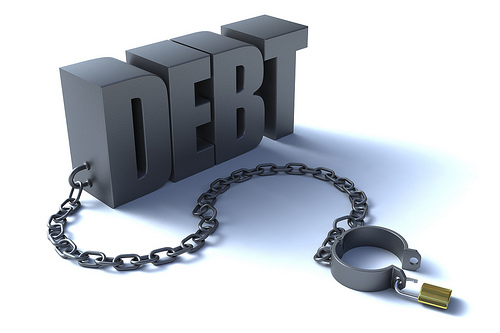 If you’re lost in financial debt, getting back in control can seem like an uphill struggle. With the high cost of living and stagnant wages, it’s not always easy to pay what you owe — especially if you’ve been borrowing from multiple creditors over the years. But when you’re deep in debt there are ways to improve your situation and get out of the red. Here’s how:
If you’re lost in financial debt, getting back in control can seem like an uphill struggle. With the high cost of living and stagnant wages, it’s not always easy to pay what you owe — especially if you’ve been borrowing from multiple creditors over the years. But when you’re deep in debt there are ways to improve your situation and get out of the red. Here’s how:
Consolidate your debt
Receiving one bill you can’t pay is worrying enough, let alone receiving a host of bills from various banks, businesses and financial organizations. Knowing who to give money to and when can seem like a minefield, but by consolidating your debt you can get rid of that big, black cloud hovering above your head. Put simply, debt consolidation, involves taking out a low interest loan with the purpose of paying off everything you owe with one simple check. It’s simple, it’s hassle-free and, with reputable companies not charging an arm and a leg for such a service you won’t plummet further into the poverty pit.
Set a budget and stick to it
If you want to have money left at the end of the month and avoid dipping into your overdraft fund — budgeting is the key. Not sure where to start? Well, first jot down what you earn or bring home each month. The next step is to calculate how much you spend on essentials including food, phone contracts, transportation and the like. Then take the latter figure away from the former to reveal your disposable income.
To make sure you maximize your spare cash, make a list of what you spend on luxuries and consider making cutbacks. If you’re buying $2.50 worth of snacks every day at work, for instance, this works out to $12.50 a week or approximately $50 a month. To help reduce these costs, try making healthy snacks at home to eat throughout the day or cut out snacking altogether if it’s simply become a habit.
Similarly, if you pay as you go at the local pool, you may find it is more cost-effective to take out a basic membership to help save money in the long run. Small changes can make a big difference to your overall wealth, so it’s well worth looking into each aspect of your finances.
Make the most of money saving apps
If you struggle to keep track of your finances, fear not, as there are many wonderful money-saving apps out there these days that’ll do the job for you. Spendee, for example, helps you to monitor your expenses, stick to budgets and see exactly where your money is going. It’ll also notify you when you’re about to overspend and presents information clearly via pie charts — and everyone loves a pie chart, right? — so you can manage your money at home or on the go.
Moreover, apps such as mySupermarket allow you to create a shopping list and compare prices for many different retailers to ensure you’re getting the best deal.
Let’s face it: Money doesn’t grow on trees and while debt can seem daunting, there are ways to dig yourself out of a dark hole — so never give up and always keep trying to improve your financial situation.
Photo Credit: Stock Monkeys

Budgeting and sticking to it are very helpful strategies to get out of debt. It’s easy to do and makes it as personalized as possible. And, you may never notice that you are slowly getting back in control.
You may be tempted to spend out of your budget range every now and then, but with self-discipline on your financial matters, theres no way that you cannot achieve your monetary goals. DISCIPLINE is the keyword.
FIRST, STOP BUYING ANY EXTRAS. Cancel cable and get antenna, cancel any kids’ sports which require money to participate. No vacations, No eating out. Sell everthing not nailed down on Facebook Marketplace. Need something including clothing? Buy used for cash. Get a part time job and use all the income for the Dave Ramsey Snow Ball plan! Write down all debts starting from smallest amount owed to largest amount. Take all extra money from part time gig and pay it on the smallest debt even if it isn’t the highest interest. Pay minimum on all other monthly payments. When smallest debt is paid off put all that monthly money plus the usual payment towards the second smallest debt. When that debt is retired start on third smallest debt and continue until you are debt free. Then keep the part time job and put all that money into savings.